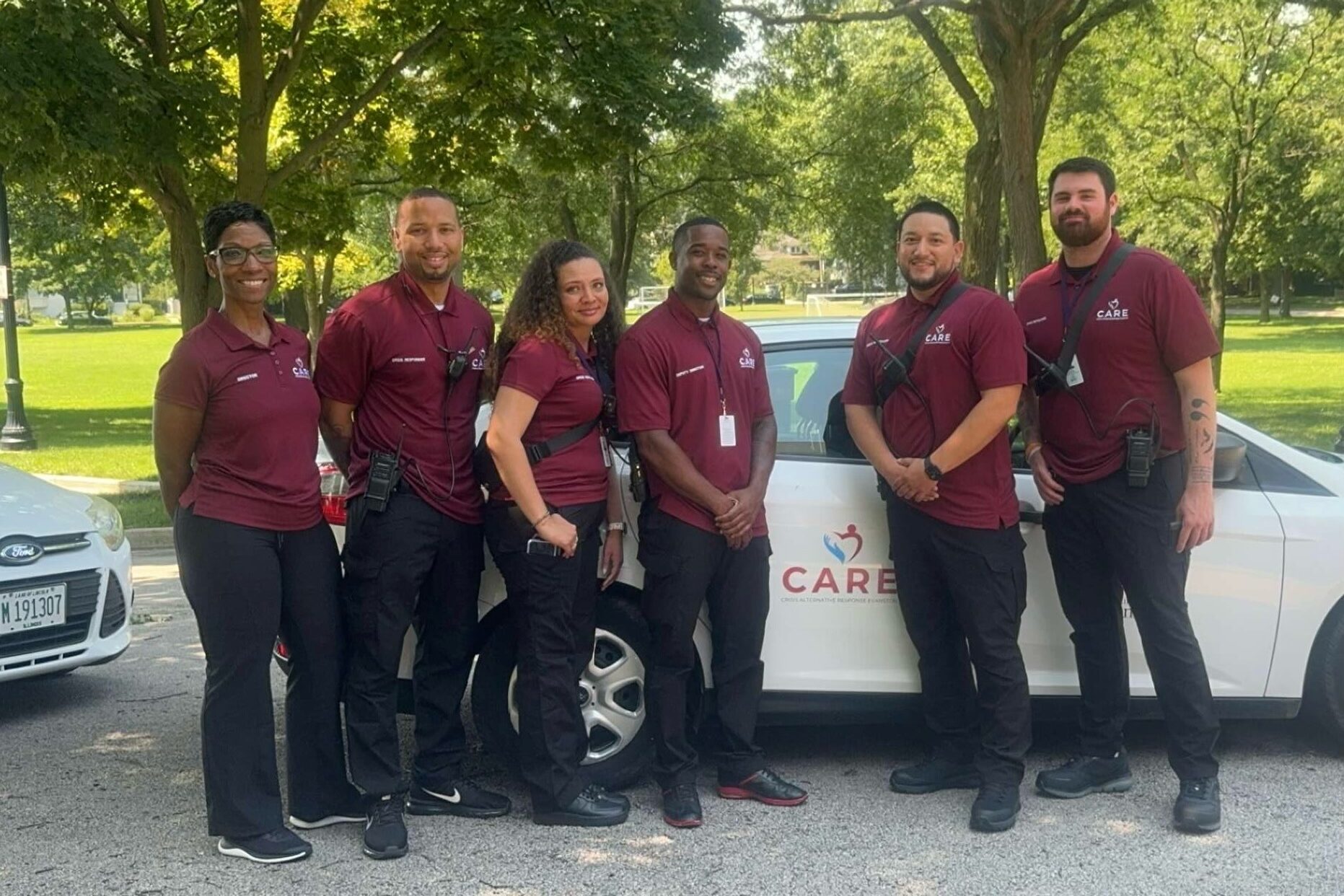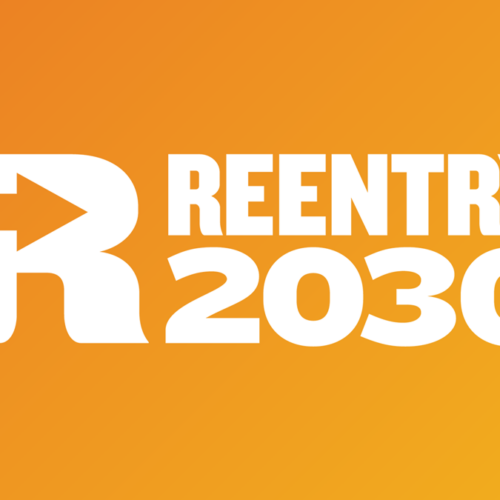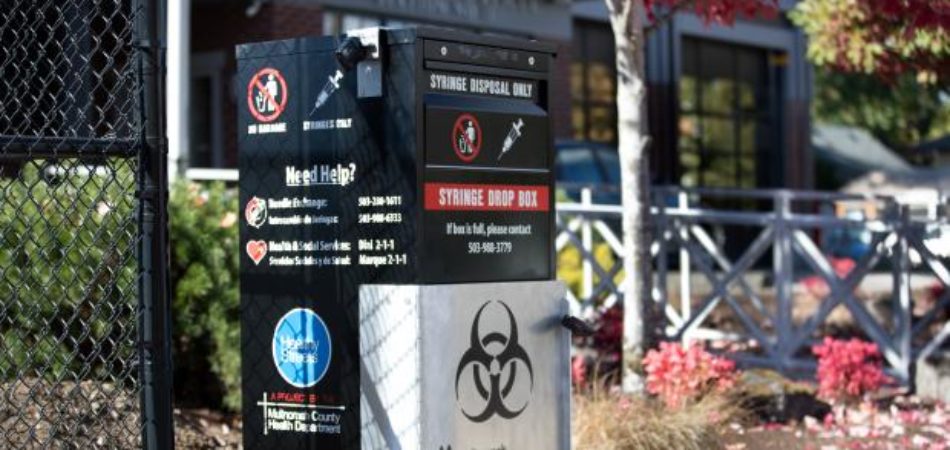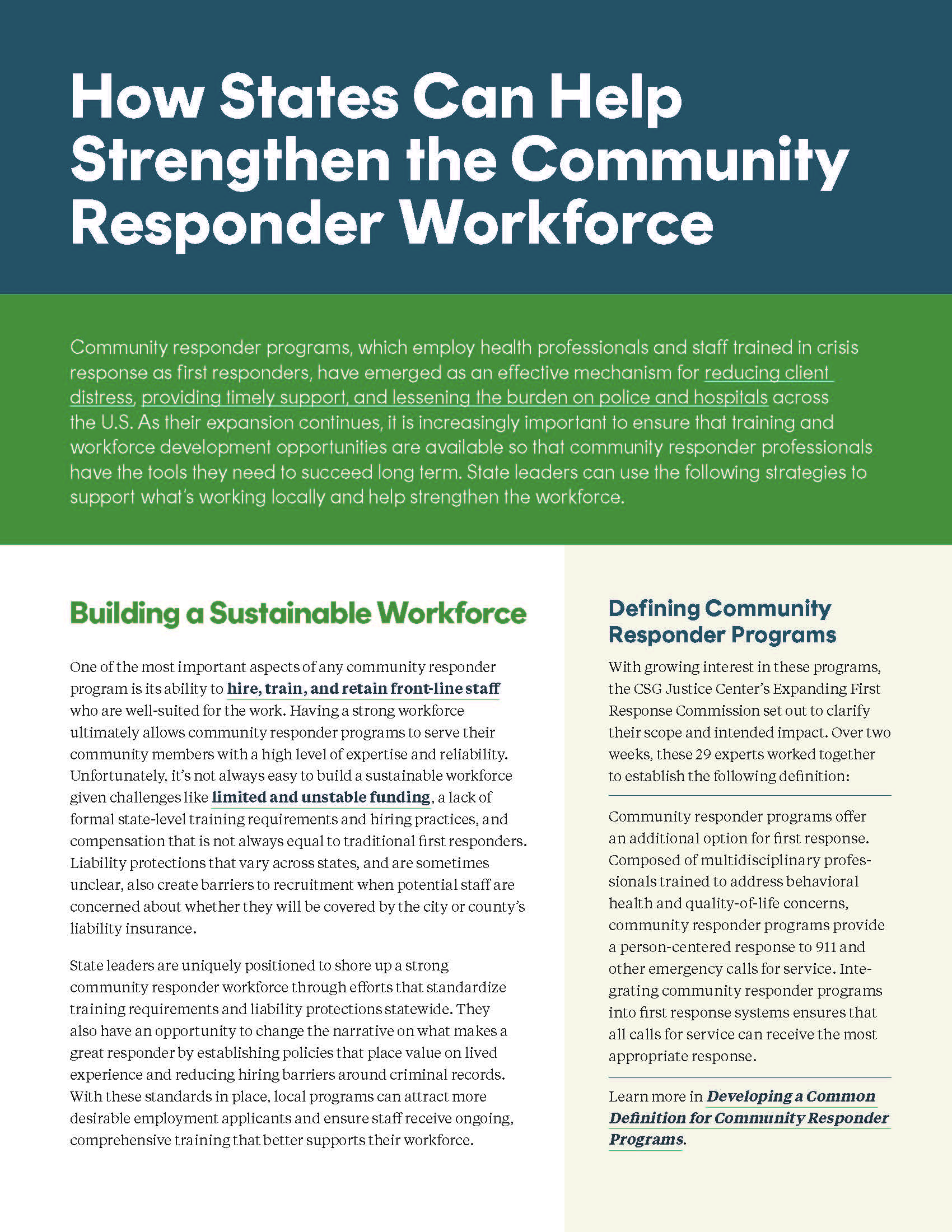How States Can Help Strengthen the Community Responder Workforce
Based on discussions among the Expanding First Response Commission—which includes advocates, first responders, policymakers, researchers, state and municipal officials, and people with other personal and professional experiences—this publication outlines three recommendations for state leaders to strengthen the local community responder workforce.
How States Can Help Strengthen the Community Responder Workforce

Photo Credit: Evanston Care Team
Community responder programs, which employ health professionals and staff trained in crisis response as first responders, have emerged as an effective mechanism for reducing client distress, providing timely support, and lessening the burden on police and hospitals across the U.S. As their expansion continues, it is increasingly important to ensure that training and workforce development opportunities are available so that community responder professionals have the tools they need to succeed long term. State leaders can use the following strategies to support what’s working locally and help strengthen the workforce.
One of the most important aspects of any community responder program is its ability to hire, train, and retain front-line staff who are well-suited for the work. Having a strong workforce ultimately allows community responder programs to serve their community members with a high level of expertise and reliability. Unfortunately, it’s not always easy to build a sustainable workforce given challenges like limited and unstable funding, a lack of formal state-level training requirements and hiring practices, and compensation that is not always equal to traditional first responders. Liability protections that vary across states, and are sometimes unclear, also create barriers to recruitment when potential staff are concerned about whether they will be covered by the city or county’s liability insurance.
State leaders are uniquely positioned to shore up a strong community responder workforce through efforts that standardize training requirements and liability protections statewide. They also have an opportunity to change the narrative on what makes a great responder by establishing policies that place value on lived experience and reducing hiring barriers around criminal records. With these standards in place, local programs can attract more desirable employment applicants and ensure staff receive ongoing, comprehensive training that better supports their workforce.
“When we hire police officers, we don’t require them to come in trained. We pay them while we train them…Whatever police have, whatever the fire department has, community response should have. This is public safety,” said Dr. Amy Watson, a professor at the Wayne State University School of Social Work and member of the national Expanding First Response Commission.
Defining Community Responder Programs
With growing interest in these programs, the CSG Justice Center’s Expanding First Response Commission set out to clarify their scope and intended impact. Over two weeks, these 29 experts worked together to establish the following definition:
Community responder programs offer an additional option for first response. Composed of multidisciplinary professionals trained to address behavioral health and quality-of-life concerns, community responder programs provide a person-centered response to 911 and other emergency calls for service. Integrating community responder programs into first response systems ensures that all calls for service can receive the most appropriate response.
Learn more in Developing a Common Definition for Community Responder Programs.
3 Things State Leaders Can Do to Strengthen the Community Responder Workforce
The Expanding First Response Commission—which includes advocates, first responders, policymakers, researchers, state and municipal officials, and people with other personal and professional experiences—met between January and March 2025 to develop actionable guidance for state leaders interested in supporting local community responder efforts. Below are three of their recommendations:
1. Create a career pathway to standardize and establish credibility in the community responder profession.
With most professions, there are specific criteria that must be met in order to have a workforce with the necessary competencies to do the role and to establish credibility in the eyes of the general public. State leaders can support a stronger workforce through the development of credential criteria or even a new certification that makes clear the responsibilities of team members and encourages people to view community response as a viable career option. Efforts should be taken, however, to ensure that the criteria do not contain prohibitive requirements such as needing to have a college degree.
2. Implement policies to attract professionals.
Laws that give community responders liability protections, like that of other first responders, are one way to attract potential employees by alleviating concerns they will need to use personal resources to protect themselves. State leaders can also pass laws that allow programs to offer more competitive salaries, increase amounts of paid time off, and facilitate certain levels of student loan forgiveness as incentives to apply for employment.
3. Reduce hiring and retention barriers.
Creating a welcoming hiring ecosystem that facilitates and does not block people from joining the workforce helps secure more staff for the program and ensures its sustainability. State leaders can support these efforts by passing laws, such as New York’s Clean Slate Act, that provide people with criminal records a clear pathway for employment and values their lived expertise. States can also create universally accessible and culturally informed trainings, potentially partnering with educational institutions, to make sure staff are equipped with the knowledge and skills to succeed in their roles.
Read more resources based on recommendations from the Expanding First Response Commission.
State Example of These Strategies in Action
With funding support from the state of Washington, Behavioral Health Crisis Outreach Response and Education (BHCore) was established in 2024 to support the emergency field response community across the state. BHCore provides training opportunities, funds innovative programs, supports workforce development, and collects data to help shape policy and improve behavioral health service provision within the emergency response system. As part of their efforts, they developed a statewide training opportunity for co-response and alternative response teams operating within the emergency response system. The training prepares teams to deliver enhanced crisis response, outreach, and follow-up services.
Project Credits
Writing: Rachel Lee, CSG Justice Center
Research: Mari Bayer, Michelle Fernando, and Rachel Lee, CSG Justice Center
Advising: Hallie Fader-Towe and Anne Larsen, CSG Justice Center
Editing: Darby Baham, CSG Justice Center
Design: Theresa Carroll, CSG
Web Development: Caroline Cournoyer, CSG Justice Center
Public Affairs: Sarah Kelley, CSG Justice Center
Back to Top of Publication.
8 states gathered to discuss workforce solutions for formerly incarcerated people.
Read More Reentry 2030 States Explore Day 1 Employment Readiness After Incarceration
Reentry 2030 States Explore Day 1 Employment Readiness After Incarceration
8 states gathered to discuss workforce solutions for formerly incarcerated people.
Read More










